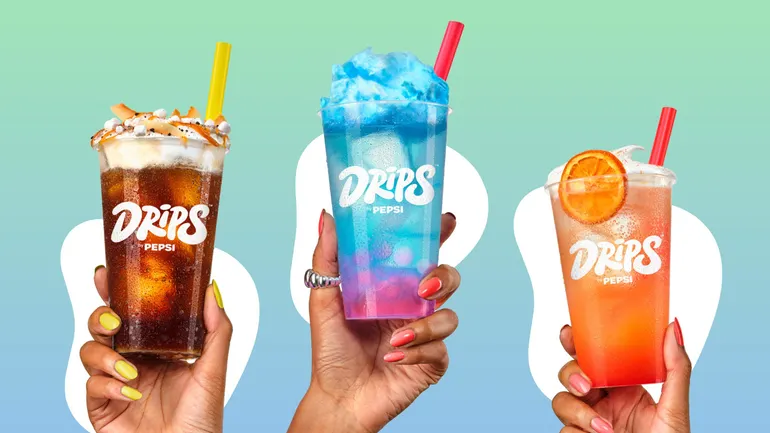Coca-Cola and Pepsi have long been staples in many restaurant beverage programs, often associated with fast food. However, with the rise of social media and increased consumer demand for premium drinks, major soda companies are rethinking their beverage lineups.
One notable trend in this evolution is the emergence of “dirty sodas,” which are sodas modified with syrups, creamers, and other additives. This trend first gained traction in the 2010s, starting in Utah with establishments like Swig, known for serving sodas mixed with creamer.
Dirty sodas gain menu prominence
Operators are embracing dirty sodas as a way to offer limited-time offerings that set their restaurants apart from competitors. These unique drinks have proven to drive higher check averages, with consumers spending an average of $3 more per trip on LTOs.
PepsiCo is capitalizing on the premium soda trend with its Drips line, a collection of mixed beverages designed for discerning consumers. These drinks combine standard Pepsi products with add-ins and new flavors.
Like Pepsi, Coca-Cola is also exploring the non-alcoholic premium crafted drinks market. They are aiming to cater to the customization preferences of Gen Z consumers by offering a variety of flavor options and ingredients.
While the visual appeal of dirty sodas may be striking, consumer preferences tend to lean towards familiar flavors. Classic options like Blue Raspberry and Mango have seen consistent sales growth, likely due to their recognizable taste profiles.
As the popularity of dirty sodas continues to rise, beverage companies and quick-service restaurants are expanding their offerings to meet consumer demand for premium, customizable drinks.
McDonald’s and Yum Brands are among the chains testing new beverage concepts to stay competitive in this evolving market. With major players introducing their own versions of premium sodas, it’s likely that other restaurant brands will follow suit.

